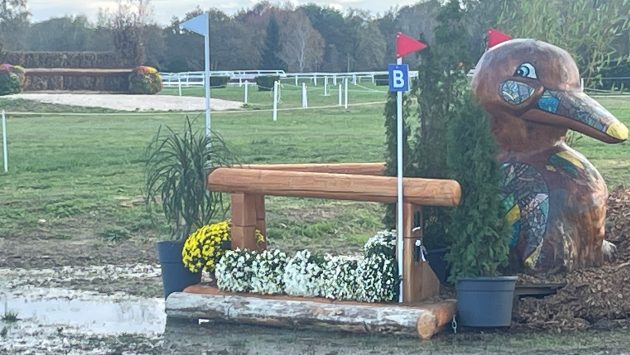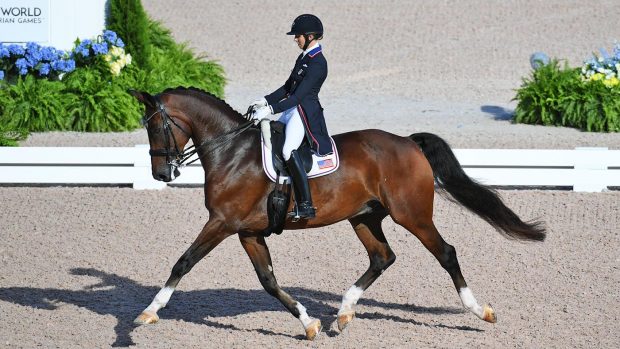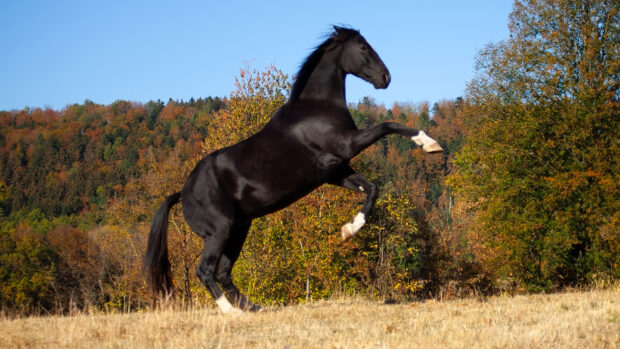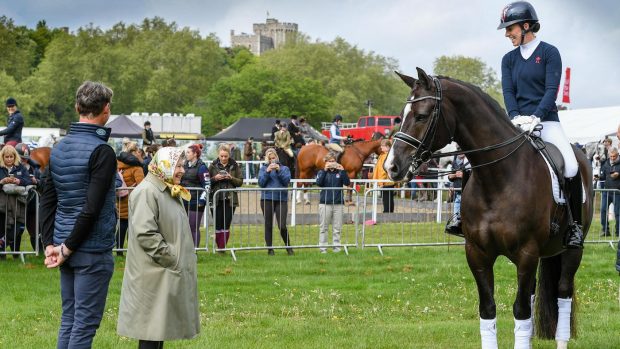Should cross-country fences be automatically removed after horse falls – and should riders face more sanctions? Those were two of the big questions debated at the FEI eventing risk management forum in Jardy (20 to 23 January).
The forum was asked “not to get defensive” or to look back at the past with rose-tinted glasses, but to look actively at how to influence the sport’s future for the best “so Versailles is not the last Olympic Games” for eventing.
Laurent Bousquet, a member of the FEI eventing risk management steering group and a trainer, put forward several ideas for discussion. He asked the forum to consider whether a fence should be automatically removed after two horse falls, and whether after any horse fall, riders should have a discussion with officials about what happened.
He also asked the forum to discuss whether riders should be given a recorded warning after every horse fall. This would mean that if a rider has three horse falls within a two-year period, they collect a two-month suspension. His final topic was whether retrospective sanctions should be applied – perhaps involving an expert panel to review cross-country footage after an event, which could have power to dish out sanctions.
Under the current rules, a fence that causes two horse falls must be reviewed and removal discussed.
The ideas sparked strong views. The running themes were whether this would help change riders’ mindsets, how many horse falls is too many at a fence, and whether removing fences in the past could have prevented further horse falls. On the flip side, points were raised over unintended negative impacts on safety.
Canada’s Rob Stevenson, a cardiologist, national safety officer and risk management steering group member, referenced statistics, which show that in the last four years, 164 horse falls happened at a fence where two horse falls or more were recorded.
“That means that by eliminating a fence after a single horse fall we would have avoided 80 falls over four years,” he said. “And I guess the challenge that I put out to our group is if you can think of anything else that immediately can make a decision to avoid 80 horse falls over the next four years, I welcome it.”
British Eventing chief executive Helen West said she “100% obviously supports the direction to make the sport safer”, but questioned the risks that removing a fence after a single horse fall could have.
“For me personally, two horse falls at the fence and the fence comes out, feels comfortable,” she said.
“Is it fair [after one fall] for that fence to then be taken out in terms of actually the integrity of the cross-country test and having enough fences left in the track to make it of the standard and the level it should be?”
Mike Etherington-Smith warned about over-regulation
“To automatically remove a fence after two horse falls, I understand the logic, but we have to understand the reasons for it,” he said, adding that eventing safety is a “massive jigsaw”.
“We need to look at the MERs. We need to make sure that people are not getting to these competitions if they’re not ready to be there. We have to make sure that the CCI3*-L and CCI4*-L courses are up to standard, which they are not necessarily. We know that there are people getting soft qualifications.
“So I think we need to come at it from a slightly different direction. It’s not as black and white as as has been portrayed so far.”
He added he understands Rob’s logic, but “has a different view on it”, and agreed with Helen that “we have to understand the consequences”.
“It may be that we have to think about different situations for different levels of the sport,” said Mike.
“But I’m just nervous about this headlong drive to try to capture every single opportunity to reduce risk in the sport, which we need to, but not every single opportunity is going to be appropriate.”
Rider Jonathan Holling, who is part of the risk management steering group and a national safety officer, questioned whether automatic removal makes sense from a course-design perspective.
“I don’t think we’re at a place where, whether we decide it’s one, two or three [horse falls], we should just blanket statement say, ‘that fence comes off’,” he said.
“In my opinion – and this is just food for thought – I think there are fences on course[s], where if you take that fence off because you’ve had a horse fall, or God forbid two, you could potentially be making the next combination more dangerous.”
‘There has to be a wash-up’
Six-time Burghley Horse Trials winner William Fox-Pitt welcomed more discussion around this, suggesting that perhaps three horse falls at a fence should be the automatic number for it to be removed.
On when officials should step in and pull a rider up, he added: “It’s a really tough one. Responsibility lies with the rider, but obviously the ground jury are watching and they see stuff that maybe they don’t like. I think very often the riders are at error, but they do need help. Sometimes we do get it wrong. Our adrenaline is going and we do make mistakes.
“So sometimes I think the ground jury has got to be braver and maybe you regret pulling someone up sometimes and think you know what, we did actually get that wrong and we’re learning from it, but I think sometimes they’re too nice.”
He added that he believes there should be a correlation between horse falls and warning cards.
“There’s got to be a wash-up, you can’t just have a crashing fall and walk away from it these days,” he said, adding that he “wouldn’t necessarily want to see riders being punished”.
“I think you’ve got to be at least brought forward to the ground jury to discuss it, look at it, analyse it.
“I would be pretty disturbed if I did have three horse falls in a season and a half, or two seasons. I think that is quite a big deal. It should be assessed.
“As a sport we have got to start to analyse, assess and accept these things as being something that we are addressing. The rider I think probably does need to be cautioned or know they’re being looked at, because then we all do become more aware.”
He also welcomed the idea of a retrospective penalty, adding that things can be missed on the day, but riders “should pay the price”.
“I think [riders] have to know there is a risk that someone will look at that and realise how horrifyingly you rode or what you did, and you should be penalised. And I feel very strongly that there should be elimination in that too,” he said.
- What do you think? Send your thoughts to hhletters@futurenet.com, including your name, nearest town and country, for possible inclusion in the Horse & Hound letters pages.
You might also be interested in:

Subscribe to Horse & Hound magazine today – and enjoy unlimited website access all year round

FEI responds to frangible-device debate surrounding Pau cross-country

Debate rages on ‘dumbing down’ cross-country as safety work continues

Risk profiles for cross-country courses could be on the cards thanks to new research
Horse & Hound magazine, out every Thursday, is packed with all the latest news and reports, as well as interviews, specials, nostalgia, vet and training advice. Find how you can enjoy the magazine delivered to your door every week, plus options to upgrade your subscription to access our online service that brings you breaking news and reports as well as other benefits.




